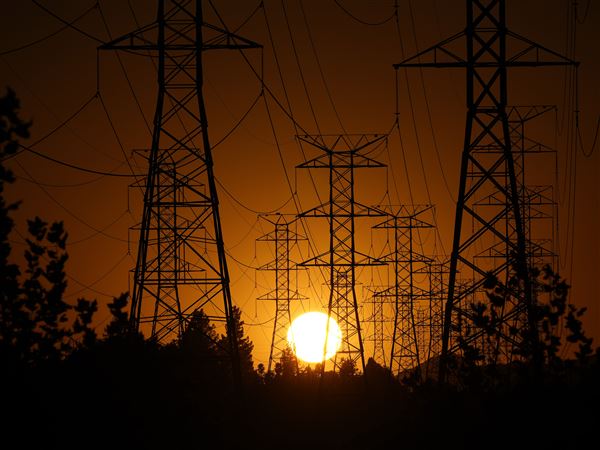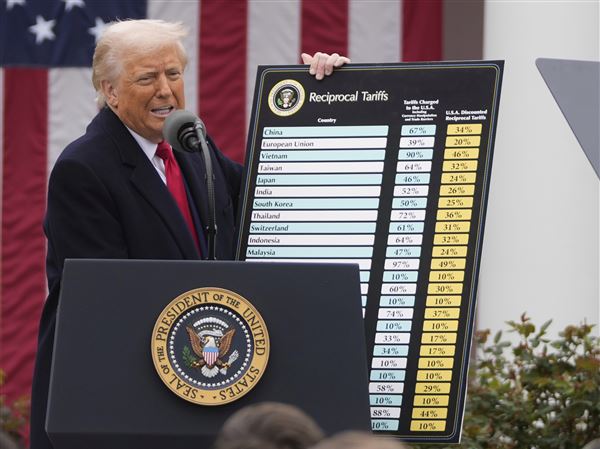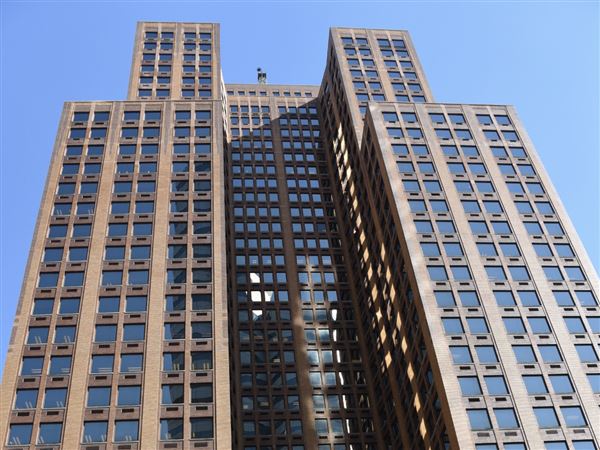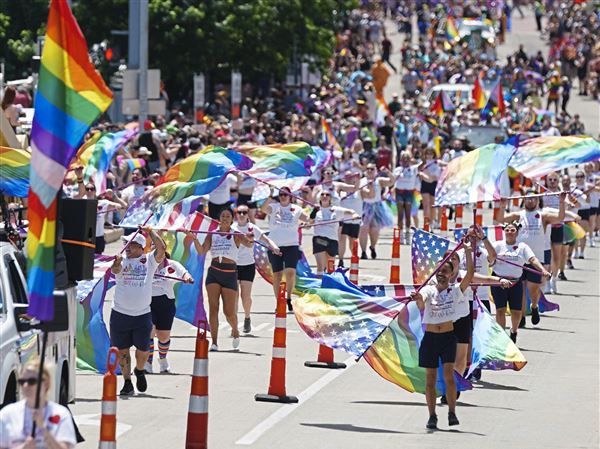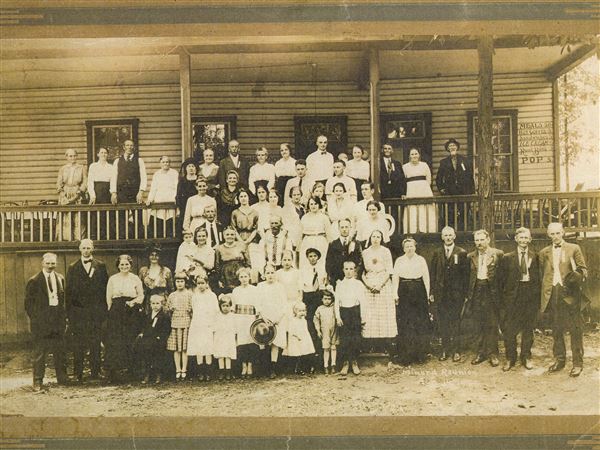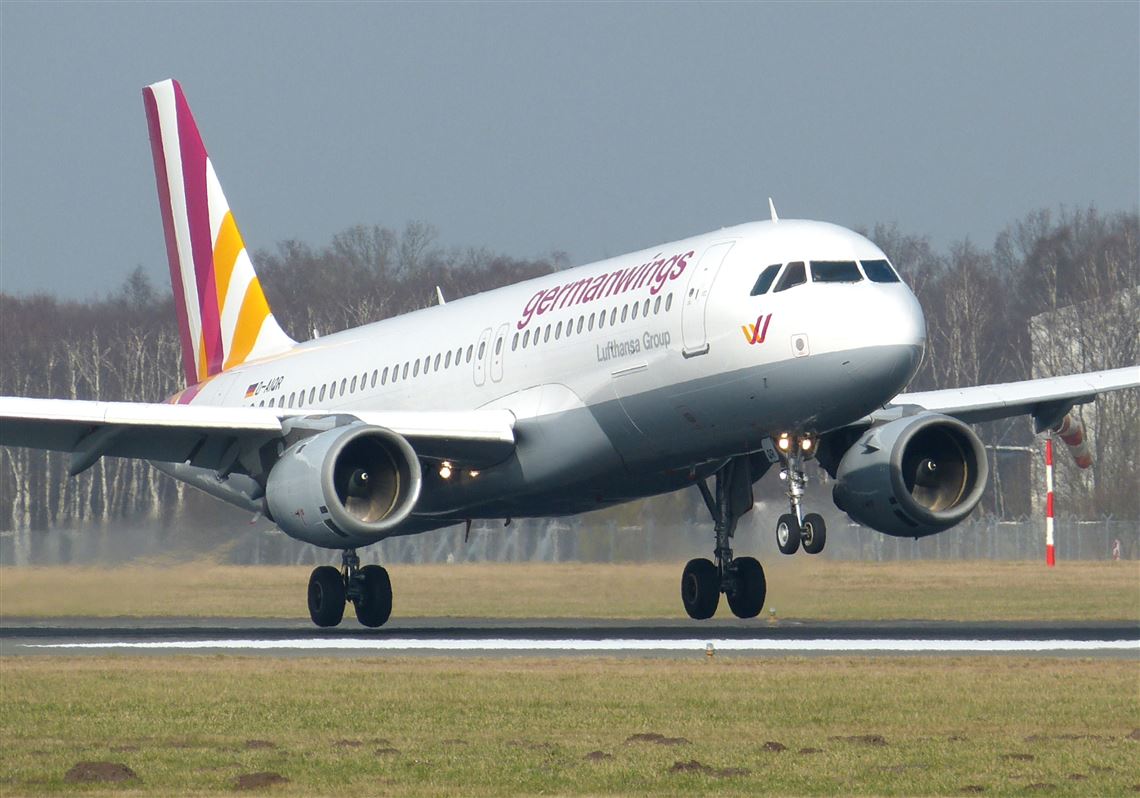The recent crash of a German airliner in the French Alps has brought an increased focus on the men and women who sit at the controls of the world’s commercial airliners. Especially those sitting in the co-pilot’s seat.
Being a co-pilot means starting out at the bottom, and that can be rough — not the glamorous lifestyle that the nation’s airline pilots used to lead.
Most airlines prefer or require a four-year degree on top of extensive flight training. Experts say its not unusual for someone to accumulate $150,000 in educational debt by the time they’re breaking into the business. That’s on par with what medical students are generally carrying with they come out of their training.
But unlike doctors, whose earnings can top $100,000 in their first year, pilots who begin their careers at smaller, regional airlines as co-pilots may not earn more than $25,000. That’s less than what the average first-year teacher or truck driver expects to make.
“If you were flying for Mesa [Airlines, a regional airline based in Phoenix], and you had a family, you could qualify for food stamps,” said one longtime pilot who flies for a major U.S. airline. “And the union used to tell their guys to go in and get their food stamps in their uniforms and their hat on and the whole nine yards, just to try to embarrass the company a little bit.”
Mesa has been identified by the Air Line Pilots Association as one of the lowest paying airlines operating in the U.S., with first-year employees making an estimated $20,183. The ALPA, a union that represents more than 50,000 pilots at 30 North American airlines, recently identified 10 lines that pay less than $22,000 a year to first-year pilots.
“That pay is not a living wage. We don’t pretend it is. But captain’s pay ... that starts at $60,000 and goes up to $110,000, which is clearly a pretty good job,” said Kit Darby, an independent aviation consultant outside of Atlanta.
Beginning with the Sept. 11 attacks, a perfect storm of events sent airline profits and pilot pay tumbling. Hiring nearly ground to a halt. A number of carriers filed for bankruptcy, and consolidation swept through the industry.
After what many have called a lost decade, airlines are finally starting to fly out of the clouds.
Pilots and industry observers say things are getting better. And while pilots with major carriers can still earn upwards of $200,000 a year, compensation still hasn't come back to the level it once was. According to data from the U.S. Bureau of Labor Statistics, the average wage for pilots and co-pilots in the U.S., when adjusted for inflation, has fallen 10 percent since 2000.
One industry observer said wages at the very top are 20 to 30 percent off their peak.
But regional airlines haven’t always had such low pay rates. Industry insiders say regional airlines provided a solid job for many pilots, who were generally well paid and often close to home. They could have made more on major carriers, but spending a full career at a smaller, regional airline wasn’t unusual.
That changed as major carriers stopped flying between smaller cities and began contracting with smaller airlines to provide ferry service from smaller towns to the big hubs.
“It became a race to the bottom. The major carriers would jump on whoever submitted the lowest bid,” said a spokesman for the Air Line Pilots Association, a major union that represents more than 50,000 pilots in the United States and Canada.
Some regionals bid so low that they had to cut costs to remain profitable, and one way to cut costs was to pay pilots less. That was a big reason pay for some smaller regional airlines sunk so far.
The Air Line Pilots Association says that’s starting to change, as regionals are finding they can't find or keep enough pilots.Though wages are still low relative to the major carriers, they are increasing. Some regional carriers have also instituted retention bonuses of as much as $20,000 a year, the ALPA union says. Others are partnering with major airlines to give pilots a clear path from what's essentially the minor leage to the majors.
Those kinds of guarantees can really help, union officials say.
“It is a little bit about the money. But that’s a second or third issue. It’s more about career progression."
Safety regulations a moving target
Following the Germanwings crash, countries across Europe instituted a rule that two crew members must be in the cockpit at all times, a requirement the U.S. already had. Larger, more complex questions of how to prevent another similar crash are more difficult to answer.
Accidents have always led to questions about how to make flying safer, and even recently have changed the industry in the United States.
Following the 2009 crash of a Colgan Air jetliner near Buffalo that killed 50 people, for example, federal regulators made a number of changes aimed at preventing inexperienced pilots from flying commercial airliners.
Most notable was a rule that set a 1,500-flight-hour standard for airline pilots and co-pilots. Industry insiders say before that accident, some smaller regional airlines were hiring pilots who were literally right out of high school and might only have had 200 hours of flight time.
The crash of the Germanwings flight seems not to be a question of skill or training, but of a deeply disturbed pilot who was bent on taking his own life.
Pilots say when they are hired, they generally undergo a mental health evaluation. Though ongoing mental health screenings are supposed to be an annual part of keeping one's medical certification in order, experts and pilots themselves recently told the Associated Press that in reality, doctors don’t probe very deeply into mental health.
The AP also reported that some pilots feel they aren’t able to disclose or seek treatment for minor issues without losing the ability to fly. Europe has a single standard for pilot medical exams, performed by specially trained doctors who look for both physical and mental issues.
Back here in the United States, the change to requiring 1,500 hours for commercial pilots has generally been supported by the industry, though some people say the extended requirements can put a bit more financial strain on new pilots.
Mr. Darby, the consultant, said people are willing to take those poor wages in the beginning because of the promise of a good payoff in the end. And in some ways a co-pilot is getting on-the-job training, almost like an apprentice in one of the building trades.
Co-pilots assist the captain in doing pre-flight inspections, managing different aircraft systems, monitoring gauges and doing a lot of paperwork. But they also fly the craft. The general arrangement is the co-pilot does half the flying and the pilot does half the flying, including takeoffs and landings. New co-pilots typically work their way up to that arrangement under the watchful eye and tutelage of the captain.
Unlike other professions that get a set eight-hour day or earn a specific annual salary, pilots are paid by the flight hour. Essentially, their pay starts when the cabin door closes and they release the brakes and ends when they reach their next destination. Experts say most pilots earn about 1,000 hours of flight time per year.
Topsy-turvy times for pilots
Even as pay slipped on the regional airlines, most pilots could expect to move up to a major legacy airline, such as Delta Air Lines or American Airlines, within a few years, getting a nice pay boost and extra job security.
Over the last decade, though, a series of events conspired to throw a major wrench into that cycle. For one, regulators increased the retirement age from 60 to 65. Add in the industry’s financial problems and hiring slowed immensely.
Louis Smith, a retired Northwest Airlines captain, has been tracking pilot hiring for four decades. He said the years following Sept. 11 were historically lean.
“The last 10 years have been the worst we've ever seen for pilot hiring. The next 10 years will probably be the best we’ve ever seen,” said Mr. Smith, now the president of FAPA.aero, a Nevada-based career and financial planner for professional pilots.
Mr. Smith’s data shows from 1990 through 2000, 15 major airlines hired an average of 2,847 pilots a year. From 2002 through 2012, those same airlines hired an average of just 1,222 pilots per year. Especially striking is 2009, when just 30 pilots were hired, all by JetBlue.
That wrecked the system. No longer was it a two or three year wait for the captain’s seat, but sometimes a decade or more.
“It was almost untenable,” Mr. Smith said. “You really didn’t have a livable wage, or a wage you could repay your student loans. It really created a lot of stress.”
No one budgeted to live on those co-pilot wages for a decade, he said. But it wasn’t just new co-pilots that were hurt. Veteran pilots at legacy carriers suffered, too.
According to salary information collected by the MIT’s Airline Data Project, the average pay of pilots and co-pilots working for those airlines peaked at $153,748 in 2002. By 2006, that had fallen 23 percent to $118,856.
Their pensions were also hit.
“The promise of ‘You work for us 30 years and we’ll provide you with a reasonable pension,’ it failed. No one saw it coming,” Mr. Smith said. “A lot of these pilots had to re-enter the workforce. It’s a long fall from the left seat of an airliner back into to the job market.”
Pay on the rise
Wages are starting to come back. United’s most recent contact, for example, gave pilots an 8.5 percent boost last year, and provides for 3 percent raises this year and each of the next two years.
Delta announced in February that would pay out profit-sharing bonuses totaling more than $1 billion to its 80,0000 employees after a strong 2014.
Pilots at American, which is still finalizing its merger with US Airways, are set to reach pay parity with United and Delta in 2016.
“Things have gotten better. They have not returned to where the profession was, but they’ve certainly come back to a level where it may be more attractive, at least on the main line side,” said Dennis Tajer, a commercial pilot and spokesman for the Allied Pilots Association.
There has been a lot of talk over the last couple of years about whether there’s a pilot shortage. Stances differ somewhat, but unions, consultants, and pilots themselves agree that there’s a pay shortage on the lower end of the spectrum.
“We think it's not only a lack of pilots, but the pilots that are out there are choosing not to engage in flying that pays so low,” Mr. Tajer said.
On the high end, wages are still quite good, if not where they were. Data from FAPA.aero shows that a veteran captain for American who pilots a Boeing 777 would be paid more than $200,000 a year.
As long as airlines continue to be profitable — and things like baggage fees have gone a long way to making that possible — pay should keep going up, experts say.
As a whole, though, flying isn't what it once was. Pilots manage high-tech systems as much as they actually fly the plane. Passengers are crammed in tight and flying is mostly just about getting there, not the journey.
“We wore a tie. Getting on an airplane was a big deal," a spokesman for the APLA said about his first trip on a plane. “People use it more like mass transportation than what it used to be. But a lot of people still want the pilot’s job. It’s a great job to have.”
The Block News Alliance consists of The Blade and the Pittsburgh Post-Gazette. Tyrel Linkhorn is a business reporter for The Blade (tlinkhorn@theblade.com, 419-724-6134) and Dan Majors is a reporter for the Post-Gazette (dmajors@post-gazette.com, 412-263-1456).
First Published: April 12, 2015, 4:00 a.m.
